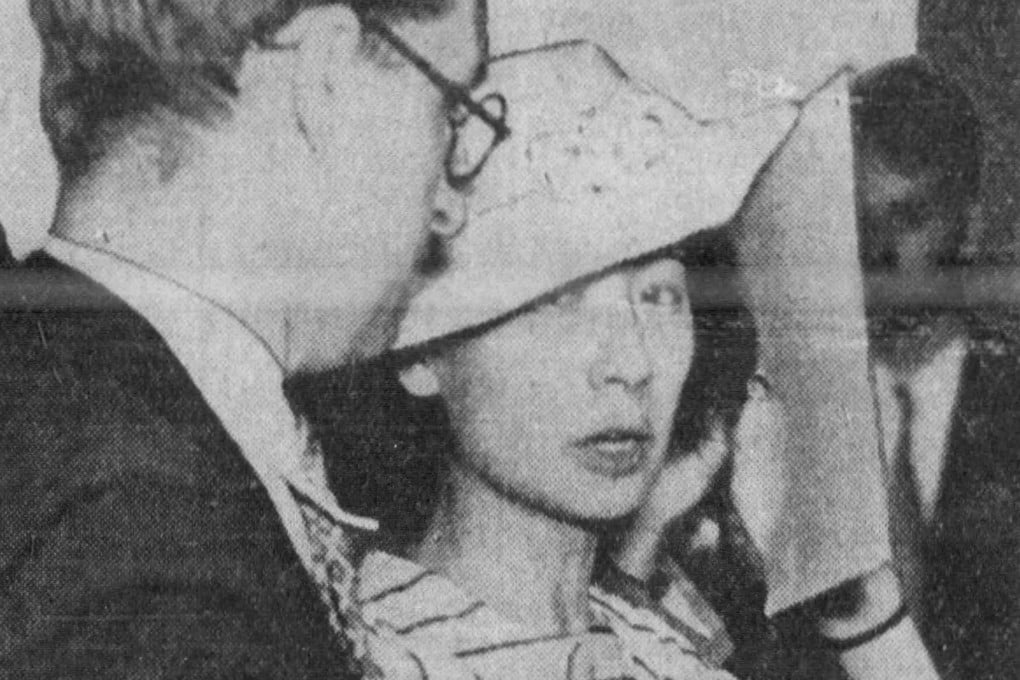The OG war on drugs: when a 23-year-old Shanghai nurse was busted smuggling US$1 million of heroin into the US
- In 1936, Maria Wendt arrived in the United States from Shanghai laden with nearly 25kg of heroin, causing a media sensation and adding fuel to America’s war on drugs. Was she an innocent mule or part of an international cartel?

When a 23-year-old Eurasian woman calling herself Maria Wendt touched down at an airfield near Los Angeles in 1936, the press flocked onto the runway to capture the first images of her descending from the plane. Pathé, Reuters, Gaumont, all sent crews to capture the “woman of mystery” who had made fools of the FBI, who were none too happy about it. As the woman was escorted away by plain-clothes policemen, she pulled down her black hat to cover her face and wrapped her coat tight around her. The pressmen shouted questions. She ignored them. Not even a “No comment”.
A newsreel soon played at cinemas across the country with the voice-over: “A woman of mystery is aboard this plane. She is Maria Wendt, daughter of a Shanghai merchant, a dope smuggler, accused of bringing opium into America from China. Uncle Sam accuses her of being part of a big international narcotics smuggling gang.”
And Maria had been caught smuggling drugs into America. A lot of drugs. Sliced open at the San Pedro docks, her two cowhide trunks were found to be hiding silk bags containing 24.5kg of heroin worth US$375,000 (US$8.5 million in 2024 money) and perhaps US$1 million (US$23 million in 2024) when cut and sold on the street. It was the largest drug haul ever made in the United States at the time. And it soon transpired that Maria was part of an operation spanning several continents and multiple cities. But there was the possibility – did she even realise she was part of this sprawling operation?
Maybe Maria’s plight wouldn’t have taken up so many column inches or newsreel frames had the US not been in one of its periodic social panics about drugs. Foreign dealers poisoning America’s youth just as the country needed them most, the economy in tatters amid war cries in Asia and Europe: xenophobia had always been at the heart of the American war(s) on drugs. There were also Chinese drug lords in league with shadowy Europeans, turning innocent young women into drug mules, creating 200,000 drug addicts in mid-1930s America. Treasury Secretary Henry Morgenthau declared war, as 570 agents were assigned to bust international drug rings targeting the US. And he needed good headlines. Just weeks after his declaration, Maria was arrested at San Pedro and the Brandstatter Ring were declared Public Enemy No 1.
During the Qing dynasty’s dying days Wen had been appointed governor general of Tibet, before joining Sun’s 1911 Xinhai revolution and becoming an official in Shanghai. He was a man of the Chinese Republic, but Constance and Maria still found their father too traditional, life with him too constricted. They were Shanghai girls – modern, educated, excited about the world. In the early 1930s, Constance pursued medical studies, training to be a doctor. Maria took French and German classes and began working as a student nurse at the city’s Paulun Hospital. In 1932, aged 19, she became engaged to the Paulun’s superintendent, a 41-year-old Frenchman from Alsace called Albert “Al” Stey. Happy times? Perhaps at first, but it was that engagement that would lead to Maria’s arrest in LA and her notorious appearance on the newsreels.

In 1936, Stey arranged for Maria to travel to Yokohama, as a private nurse to a female patient in the Paulun being transferred home to Japan. But the patient never showed up at the docks. Her two large travelling trunks did, and Maria claimed she was told to board the ship, stay on board at Yokohama, and continue to San Pedro, where she would be met by someone who would provide her with a ticket to Mexico City, accompanying another patient. Maria agreed.
